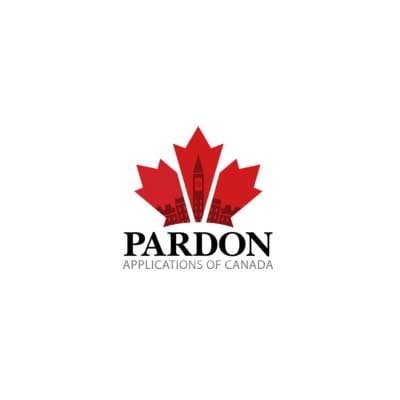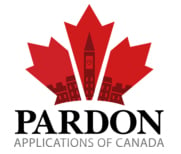
Konrad Bongard, freelance columnist for Pardon Applications of Canada, explores Bill C-36, the Protection of Communities and Exploited Persons Act, and suggests that the only way to truly protect the “right to life, liberty and security” of prostitutes is to try to end, or reduce the phenomenon of, prostitution.
They were given a year by the Supreme Court to cobble together new legislation. And for the most part, the government has done a good job.
Bill C-36, the Protection of Communities and Exploited Persons Act, was introduced by Peter MacKay on June 4. This bill is based loosely on the ‘Nordic’ or ‘Swedish’ model for the regulation of prostitution, which seeks to target purchasers of sex rather than sex workers. In that country, it is estimated that–since the passage of the Kvinnofrid law in 1999–street prostitution has been halved, from 2500 to 1000 to 1500. The bill has also been effective in Sweden in curbing the inflow of prostitutes brought from Eastern Europe. According to the Swedish police, 400 to 600 women are brought to Sweden each year to be prostitutes. Compare this to neighbouring Finland, a country half the size of Sweden, in which 10,000 to 15,000 women are brought in for the purposes of sex work each year.
To many in the Canadian punditry, however, Bill C-36 does not go far enough—they would prefer to see an outright legalization of prostitution, and a blend of academics, policy experts, and sex workers have taken to the pages of our national newspapers to decry the implementation of the Nordic model.
One doesn’t have to look very far, though, to see the perils associated with public attempts to ‘legitimize’ the sex trade.
“Imagine a ten million square kilometer Nevada, where Americans could easily cross the border and purchase sexual services, with no legal repercussion and little accountability.”
In Germany, for example, where so-called “the process of emancipation and professionalization” of prostitution has been arguably most salient, severe social problems continue to be experienced. After prostitution was legalized in 2002, the prevalence of it immediately spiked, and between 2000-2005, sex trafficking was reported by German Chief Police to have risen by as much as 70%. Today, Germany is estimated to have 200,000 working prostitutes, 65-80% of whom are from abroad — and under 1 per cent of whom report having signed an employment contract. The German Family Ministry, assessing the deregulation of prostitution, stated that the new laws have “not brought about any measurable actual improvement in the social coverage of prostitutes” and that there is “no solid proof to date” that the laws have caused a reduction in crime.

The German example, it should be said, is not an isolated one. Axel Dreher, a professor of international and development politics at the University of Heidelberg, concluded after having conducted a study gauging laws in 150 countries that “where prostitution is legal, there is more human trafficking than elsewhere.” Indeed, countries such as Thailand, the Netherlands, and New Zealand, where prostitution has legalized, have experienced similar increases in the size of their sex trades. And outright legalization of buying sexual services in Canada would be particularly likely to lead to the flourishing of prostitution because of our proximity to the United States. Imagine a ten million square kilometer Nevada, where Americans could easily cross the border and purchase sexual services, with no legal repercussion and little accountability.
Canada’s Bill C-36, it should be mentioned, is not perfect. It does not repeal section 213(1) of the Criminal Code that seeks to punish street prostitutes for stopping traffic or impeding pedestrians, which is very likely unconstitutional in light of the Bedford decision. And section 213(1.1) of the bill, which specifies that prostitutes not be allowed to offer sex where kids could reasonably be expected to be present (which could include the homes of prostitutes, if they’re mothers), is far too vague and restrictive. What constitutes a “reasonable expectation” that kids under 18 could be present?
Similarly, restrictions on selling sex as a minor or even being near a child prostitute reprise the legal penalization of prostitutes, and should be dispensed with—changes which will hopefully be implanted if the bill is referred to the Supreme Court.
However, much of the remainder of the bill makes sense.
The ban on “receiving a material benefit” from prostitution, while unfortunate in the sense that it prevents prostitutes from hiring bodyguards or drivers to protect them, is clearly necessary in order to combat the financial exploitation of prostitutes by pimps or bordello owners (and actually, some exemptions are tolerated if one studies the fine print of the bill). And the ban on advertising sexual services is quite justifiable, as while it disbars middlemen (massage parlor owners or pimps, for example) from running adverts, it provides an exemption for prostitutes running their own ads.
What critics of the bill who claim that such provisions will endanger prostitutes fail to realize is that the best way to protect prostitutes is to reduce prostitution, as in Sweden — a goal that won’t be achieved unless the government targets the middlemen who profit from it. If the short-term consequence of this is that some prostitutes will be endangered — well, as they say in French, c’est la vie.
If Bill C-36 is referred to the Supreme Court, as the Official Opposition has called for, hopefully it will recognize that prostitutes should be treated simply as ‘professionals’ in a market economy. Prostitution is always a form of exploitation, and one that in the vast majority of cases involves men purchasing the services of persons more marginalized than themselves (women, who in virtually all countries are more opposed to prostitution than men, are predictably more aware of this). Sexual violence, as the legalization of prostitution in other nations has amply demonstrated, is not always extra-legal — it can in fact be integrated into the market system. But this does not make it right.
In Canada, the only way to truly protect the “right to life, liberty and security” of prostitutes is to try to end, or reduce the phenomenon of, prostitution. Hopefully, the outcome of the current debate will lend itself to the serious pursuit of this –not the implementation of laws that make the exploitation of others a human right.
Konrad Bongard is a freelance columnist for Pardon Applications of Canada, the nationwide processing firm for Canadian Pardon (Record Suspension) & U.S. Entry Waiver applications. The opinions expressed are that of the author and do not necessarily reflect those of Pardon Applications of Canada. For a list of statistical references used in this article, or more information on Pardon Applications of Canada, call 866-383-9744 or email [email protected].
PAC’s Ongoing Service Commitment
Email [email protected]
Schedule a Call https://www.pardonapplications.ca/schedule-a-call/
My Account Dashboard https://dashboard.pardonapplications.ca/


